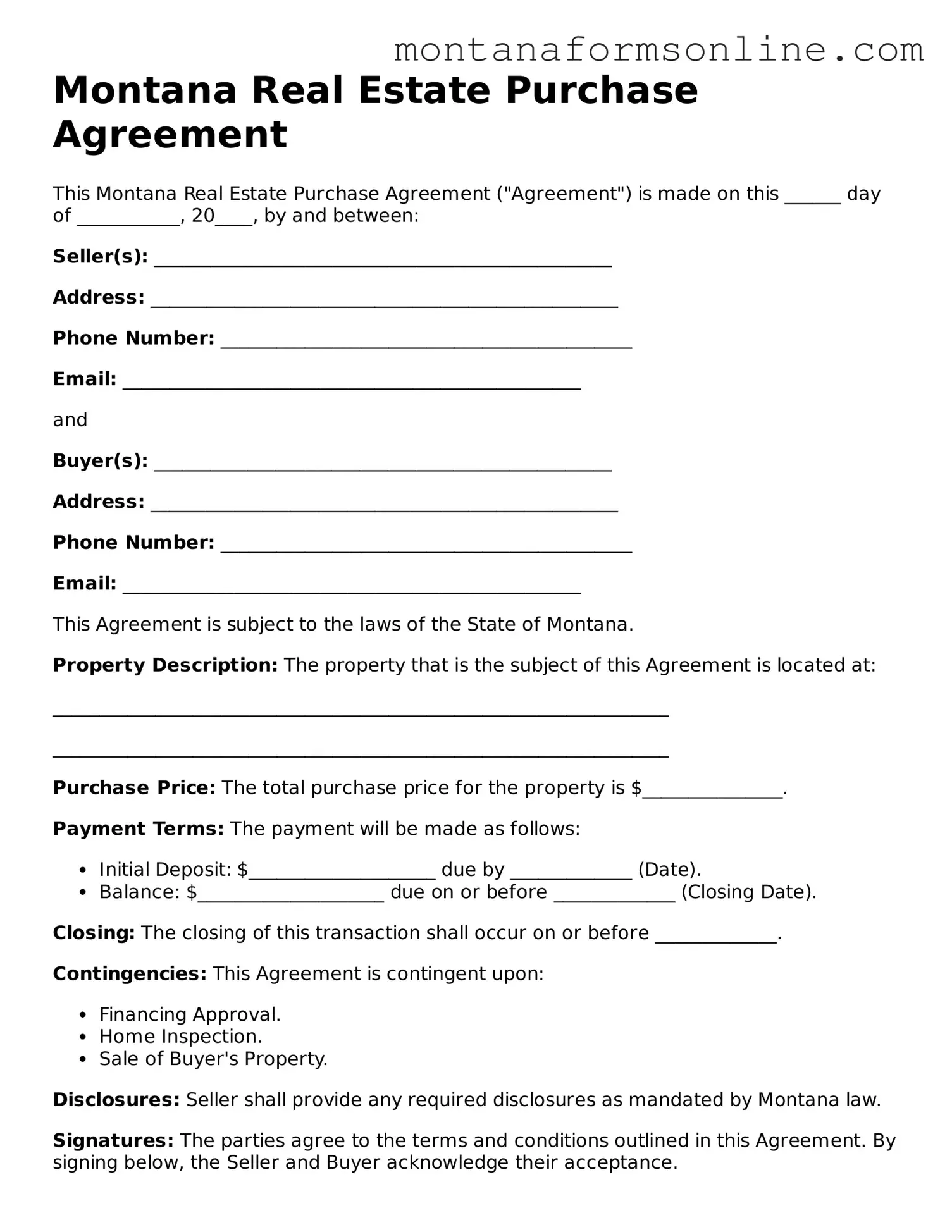Montana Real Estate Purchase Agreement
This Montana Real Estate Purchase Agreement ("Agreement") is made on this ______ day of ___________, 20____, by and between:
Seller(s): _________________________________________________
Address: __________________________________________________
Phone Number: ____________________________________________
Email: _________________________________________________
and
Buyer(s): _________________________________________________
Address: __________________________________________________
Phone Number: ____________________________________________
Email: _________________________________________________
This Agreement is subject to the laws of the State of Montana.
Property Description: The property that is the subject of this Agreement is located at:
__________________________________________________________________
__________________________________________________________________
Purchase Price: The total purchase price for the property is $_______________.
Payment Terms: The payment will be made as follows:
- Initial Deposit: $____________________ due by _____________ (Date).
- Balance: $____________________ due on or before _____________ (Closing Date).
Closing: The closing of this transaction shall occur on or before _____________.
Contingencies: This Agreement is contingent upon:
- Financing Approval.
- Home Inspection.
- Sale of Buyer's Property.
Disclosures: Seller shall provide any required disclosures as mandated by Montana law.
Signatures: The parties agree to the terms and conditions outlined in this Agreement. By signing below, the Seller and Buyer acknowledge their acceptance.
Seller's Signature: __________________________ Date: ___________
Buyer's Signature: __________________________ Date: ___________
This Agreement shall be binding upon the parties hereto and their respective heirs, representatives, and assigns.
